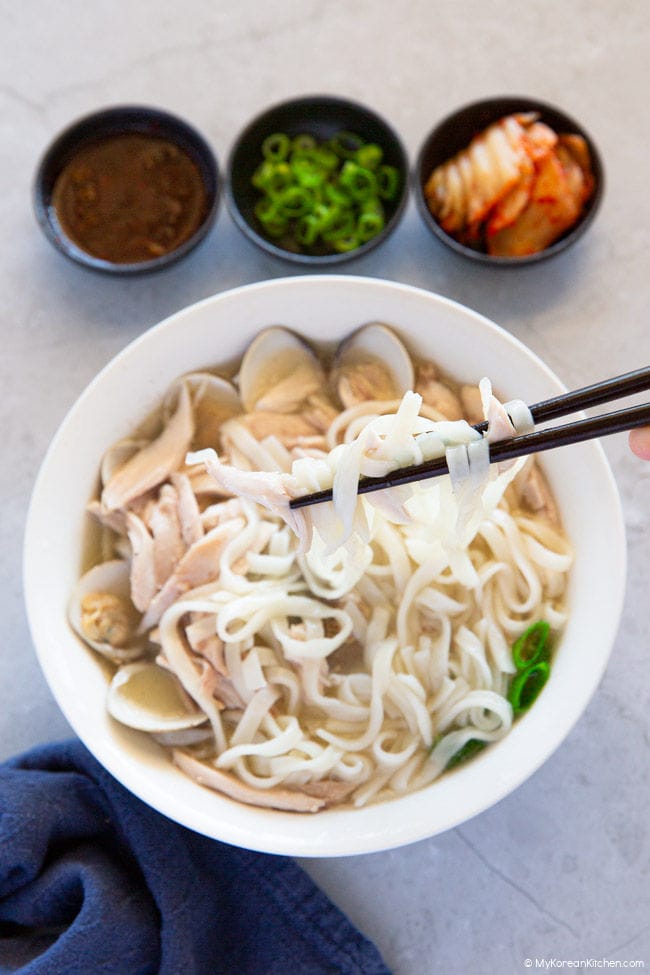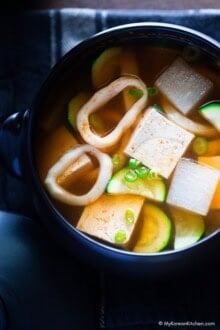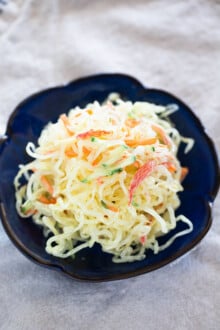Elevate your Korean soups with the rich, savory flavors of homemade Korean soup stock (also known as Korean-style dashi)! This versatile base, made with simple ingredients like dried kelp and anchovies, adds depth and umami to your favorite dishes. Once you master this essential recipe, your soups and stews will never be the same!
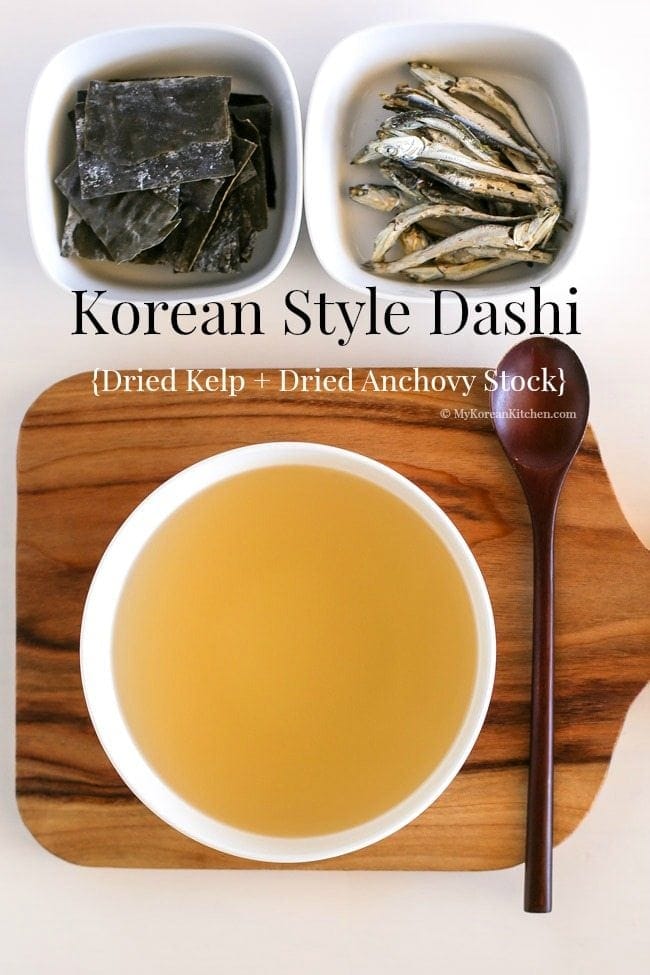
What is Dashi?
Dashi, a Japanese soup stock, serves as the foundational base for many Japanese dishes, including soups, side dishes, and noodle recipes. It’s often considered the backbone of Japanese cuisine. But why bring up Japanese dashi here?
Interestingly, dashi plays a role in Korean cooking too! In Korea, it’s commonly referred to as yuksu (육수), though the term dashi (다시) is also widely recognized and used.
Korean Soup Stock
Among the various soup stocks in Korean cooking, dried kelp and dried anchovy stock (Dashima Myeolchi Yuksu, 다시마 멸치 육수) is the most commonly used. For a more complex and layered flavor, some Koreans enhance it by adding dried shiitake mushrooms, the white part of green onions (near the root), and/or Korean radish (daikon).
As shown in the picture above, this stock is a light, water-based broth with a subtle yet savory flavor. It’s incredibly versatile and can be used in a variety of dishes, such as Korean fish cake soup, Korean miso soup (doenjang guk), and even tteokbokki.
A well-made dashi or soup stock reduces the need for heavy seasoning in your main dish, allowing the natural flavors to shine. If you’re unfamiliar with the base ingredients—dried kelp and dried anchovies—making this stock might seem daunting at first. But rest assured, it’s incredibly simple to prepare, and I encourage you to give it a try!
Ingredients
- 6 cups water
- 10g (0.4 ounces) dried kelp (or Japanese kombu) – I use pre-cut dried kelp for convenience, with each piece measuring approximately 6.5 cm (2.6 inches) by 4.5 cm (1.8 inches).
- 30g (1.1 ounces) dried anchovy, It’s approximately 20 medium-sized dried anchovies.
* 1 cup = 250 ml
** Above recipe results in about 4 and 1/2 cups of stock
How to Make Korean Dashi Stock
1. Gently wipe the dried kelp with a damp kitchen towel or paper to remove any dust or debris. If you’re short on time, you can skip this step. However, keep in mind that the white powdery coating on dried kelp is mannitol—a natural sugar alcohol that enhances its sweetness and umami flavor. So, be careful not to scrub too hard and remove this beneficial layer!
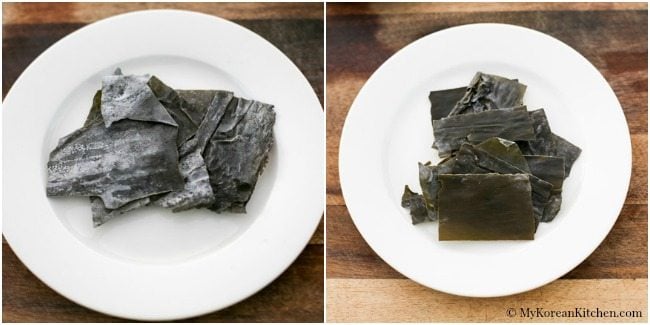
2. Soak the dried kelp in 6 cups of water in a saucepan for 1 hour. (For an even deeper flavor, you can soak it overnight if time allows. Alternatively, if you’re short on time, you can skip this step.)
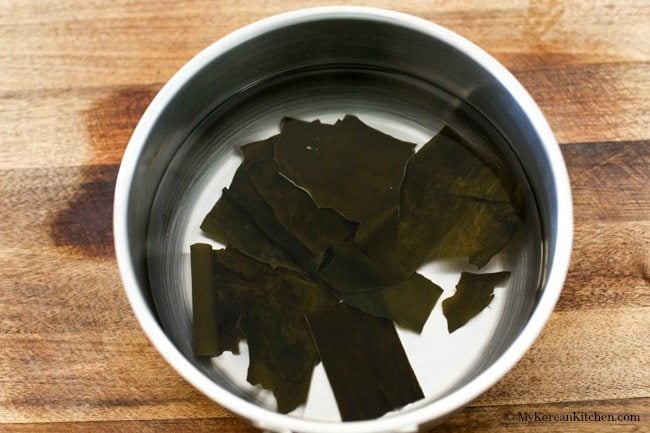
3. Remove the heads and black innards from the anchovies. Place the cleaned anchovies into a spice ball or large tea strainer. (Using a strainer isn’t essential, but it helps make the cooking and cleanup process much tidier.)
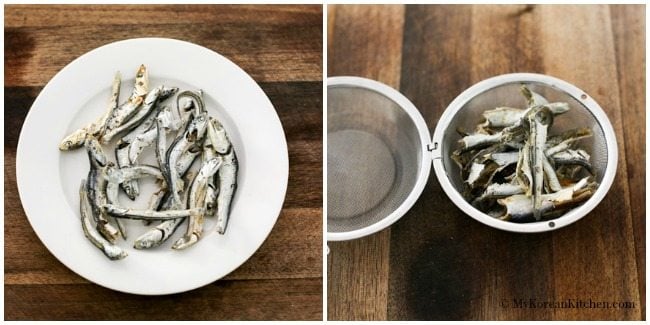
4. Add the anchovy-filled spice ball to the saucepan (from step 2). If you skipped step 2, add the water to a saucepan along with the spice ball. Then, boil them on medium-low heat for 10 minutes.
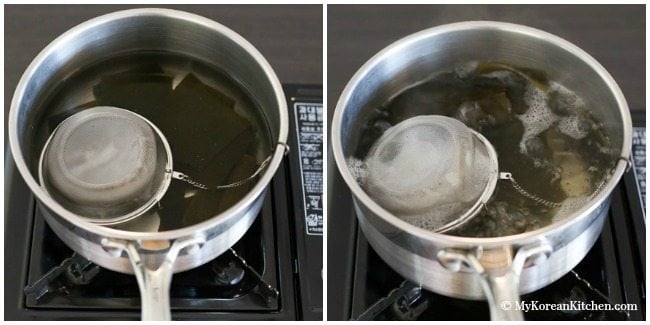
5. After 10 minutes, remove the kelp using tongs and continue boiling the anchovies on low heat for another 10 minutes.
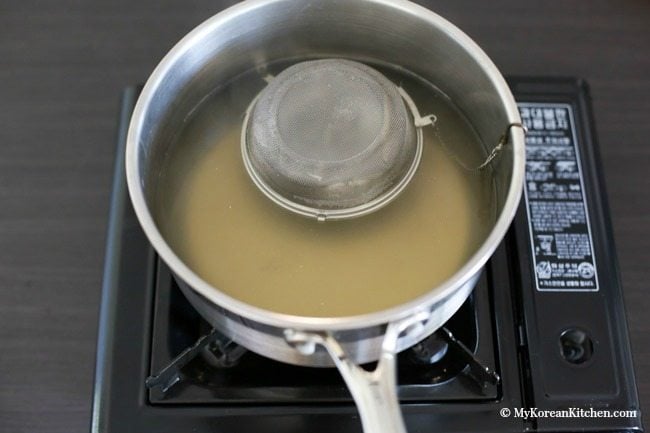
6. Remove the anchovy ball and strain the stock through a kitchen muslin cloth to catch any leftover kelp or anchovy particles. The soup stock is now ready to use. If you plan to use it later, let it cool and transfer it to an airtight container or bottle. It will keep well for a few days in the fridge and up to 3 months in the freezer.
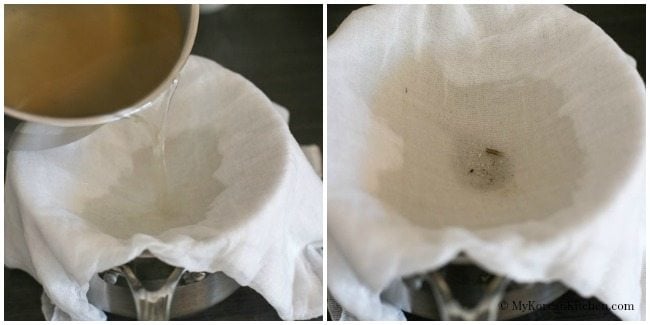
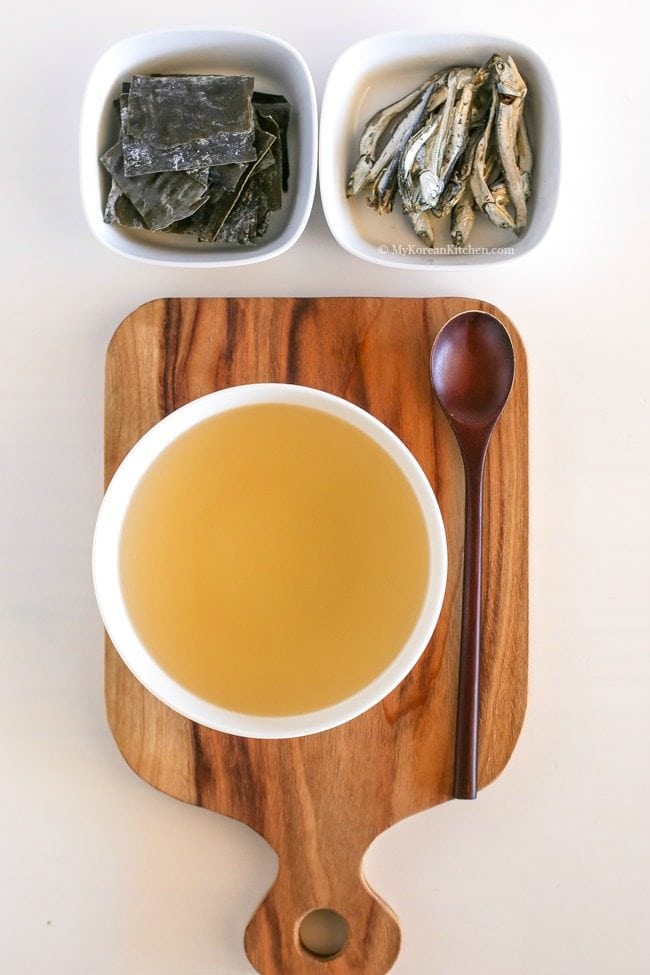
Note
- If your anchovies have an overly fishy smell, you can stir-fry them in a dry pan for a few minutes or microwave them for less than a minute (just my rough estimate). This method is actually recommended by dried anchovy manufacturers, but I didn’t find it necessary for my recipe.
- If you have specific dietary requirements, you can choose one ingredient over the other. For a vegetarian stock, use only dried kelp, which is called “Dashima Yuksu (다시마 육수)“. Alternatively, you can use only dried anchovies to make a stock called “Myeolchi Yuksu (멸치 육수)“.
- Do not overboil the dried kelp, as it can become slimy and bitter.
Watch How to Make Korean Soup Stock (Short Cut Version)
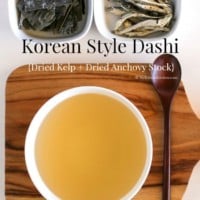
How to Make Korean Style Dashi
Ingredients
- 6 cups water
- 10 g dried kelp or Japanese kombu (0.4 ounces), I use pre-cut dried kelp for convenience, with each piece measuring approximately 6.5 cm (2.6 inches) by 4.5 cm (1.8 inches).
- 30 g dried anchovy (1.1 ounces), It’s approximately 20 medium-sized dried anchovies.
Instructions
- Gently wipe the dried kelp with a damp kitchen towel or paper to remove any dust or debris. If you’re short on time, you can skip this step. However, keep in mind that the white powdery coating on dried kelp is mannitol—a natural sugar alcohol that enhances its sweetness and umami flavor. So, be careful not to scrub too hard and remove this beneficial layer!
- Soak the dried kelp in 6 cups of water in a saucepan for 1 hour. (For an even deeper flavor, you can soak it overnight if time allows. Alternatively, if you’re short on time, you can skip this step.)
- Remove the heads and black innards from the anchovies. Place the cleaned anchovies into a spice ball or large tea strainer. (Using a strainer isn’t essential, but it helps make the cooking and cleanup process much tidier.)
- Add the anchovy-filled spice ball to the saucepan (from step 2). If you skipped step 2, add the water to a saucepan along with the spice ball. Then, boil them on medium-low heat for 10 minutes.
- After 10 minutes, remove the kelp using tongs and continue boiling the anchovies on low heat for another 10 minutes.
- Remove the anchovy ball and strain the stock through a kitchen muslin cloth to catch any leftover kelp or anchovy particles. The soup stock is now ready to use. If you plan to use it later, let it cool and transfer it to an airtight container or bottle. It will keep well for a few days in the fridge and up to 3 months in the freezer.
Nutrition Info (per serving)
The nutrition information shown is an estimate provided by an online nutrition calculator. It should not be considered a substitute for a professional nutritionist’s advice.
